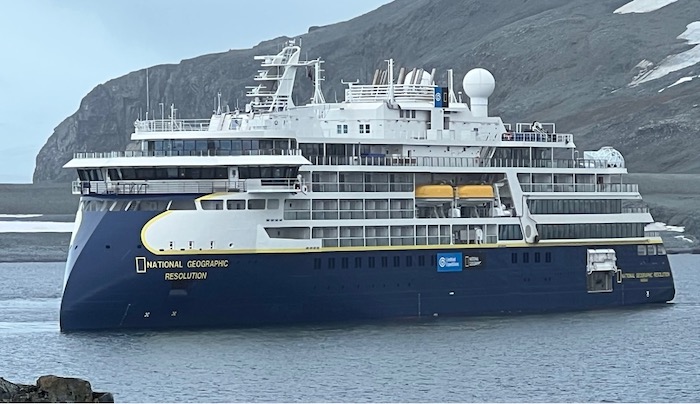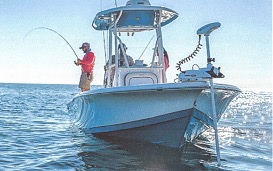Evolving and Future Trends in Anchoring?

Evolving and Future Trends in Anchoring
Dynamic Positioning Systems (DPS) have certainly become more mainstream in the past few years. Once solely the domain of commercial survey and oil exploration vessels, they are now entering the recreational boating market and even trailer boats are benefiting from variations of these sophisticated, big boat systems. Remember, it was not that long ago that the idea of self-driving automobiles was the stuff of science fiction. Even my four-year-old mainstream SUV has the capability to park itself once I’ve arrived at the supermarket parking lot. So, imagining anchoring without an anchor is not that far-fetched.
So What is DPS?
Dynamic Positioning (DP) is a computer-controlled system to automatically maintain a vessel's position and heading by using its own propellers and thrusters. Position reference sensors, combined with wind sensors, motion sensors and gyrocompasses, provide information to the computer pertaining to the vessel’s position and the magnitude and direction of environmental forces affecting its position.
As with any system, there are advantages and disadvantages. On the plus side, it is quick to set up while maneuverability is excellent and it is easy to change position. No anchor handling tugs are required and the vessel is not dependent on water depth or limited by an obstructed seabed.
On the negative side, these big ship systems are complex, with thrusters, extra generators and controllers. They are not cheap to initially install and can be costly to run with higher maintenance of the mechanical systems. There is also a chance of running off position in the case of strong currents or winds. But then again, these things can be true of traditional anchoring; as anyone who has ever had their anchor drag in the middle of the night can attest to!

Mercury’s Sky Hook is widely used.
There are a number of companies now designing, manufacturing and supplying DPS type systems to larger recreational vessels and, not just superyachts, but power boats in the 15 to 30m range.
The Xenta System is promoted as the virtual anchor at the touch of a button and the company claims that Dynamic Positioning is the perfect way of maintaining your boat’s position without dropping anchor. Investigation reveals that there are several other marine companies offering similar systems. Both Twin Disc and Volvo Penta are well known examples. During my research I found that You Tube has many short video clips showing how DPS systems work on mid-sized boats (i.e. those around the 15 to 30m range). If you are interested, just search YouTube by typing in the following search words: DPS virtual anchor. Enjoy!
DPS is also now available, and somewhat practical for smaller outboard powered boats (less than 15m ), such as the likes of Mercury Marine’s ‘Skyhook’, and Yamahas new EX system.
They are also available with some trolling outboards from Minn-Kota and MotorGuide. Both perform silently with remarkable precision in keeping the boat in position. As with a conventional anchor, the bow tends to point into the current or wind, whichever is stronger.

However, there are drawbacks. Electric trolling motors are relegated to smaller, freshwater fishing boats and salt water bay boats with low-profile bows. Trolling-motor shafts aren’t long enough for boats with high bows. Also, to adequately control a boat larger than 7m, you need a 36-volt system, which means three heavy, deep-cycle batteries dedicated to the trolling motor
As with trolling motor systems, there are drawbacks with “Skyhook” type systems. For instance, when used on larger recreational fishing boats (a nice way to precisely target fish on wrecks or in passes without anchoring); in reality, not as idyllic as it may originally seem, mostly because of the noise, vibration, exhaust fumes and constant thumping as multiple drivetrains and perhaps also, bow and stern thrusters, rev and shift to hold the boat in position — not exactly the peace and quiet most anglers have in mind. Also, with fishing lines draping over the sides with engines in gear, the chances of fouling a propeller increase significantly.
It is important to note that if you’re using an automatic positioning system, resist the temptation to set and forget. Engines stall. Fuses blow. Electronics blank out. Any of these can short-circuit a virtual anchoring system. If your head’s not in the game, you’ll quickly be at the mercy of wind and current. Need to just relax? Drop the old-fashioned anchor in a quiet cove. That’s a positioning system that you can trust the most.
None of this means you forget about conventional anchors and anchoring. You still must carry that gear in order to have a quiet night in a secure anchorage inside your favorite bay or cove. And, what will you do when the lights are out and you’re drifting to a lee shore?
Anchoring systems have come a long way since the earliest explorers set sail across the planet’s oceans. Seldom do we have to manually drop the anchor or hand over hand retrieve it after a day’s fishing or in the morning, when we are ready to get underway after